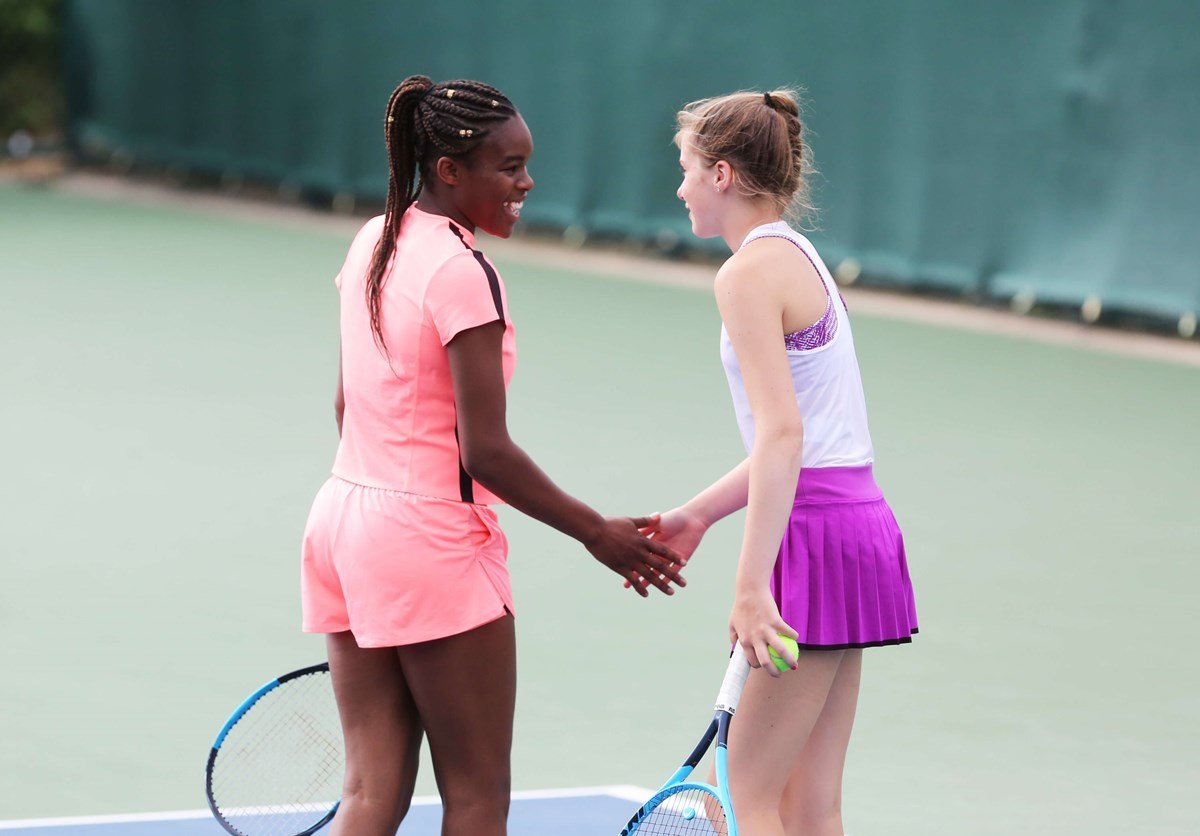How to improve your doubles skills – your questions answered by expert LTA coach Louis Cayer

A few weeks ago, we asked you, our Advantage members, to send in your questions for tips and tricks to improve your doubles game.
Advice for beginners, in-game tactics and staying positive on court – we put these questions to none other than British doubles guru, Louis Cayer.
Louis has worked with many of the top British and international doubles stars – including three world No.1s since 2016 in Jamie Murray, Joe Salisbury and Neal Skupski.
Check out his thoughts and advice on key areas to help you perform better on the doubles court:
What would be your best tip you give to people starting to play doubles for the first time?

Remember that doubles is a team sport – albeit a small team! The first rule in doubles is finding the best partner available, so make sure that you are being the “best partner” and then everyone will want to play with you.
When we say ‘the best partner’ we’re not just talking about the quality of the tennis – it’s about the partnership. Always be ready to praise your partner for a good shot or encourage them after they’ve made a mistake.
If you’re playing with a good partner and having fun out on court, then you’ll want to play more and that’s when you can start learning about different tactics. Until then, there’s no reason to worry about anything else.
What’s your advice on when you should poach at the net?

There are three different times when you would poach when your partner is serving:
- Poach per reaction – you’re not supposed to poach but the return cross court is slow and easy to volley so you decide to go for it and put the shot away.
- Poach per anticipation – you’re not supposed to poach but you read that your opponent is going to hit cross court, so you anticipate and cut across to poach.
- Poach per agreement – where you agree with your partner before the point whether you are going to poach or not. You’ll see the pros doing because if you poach too early and the ball goes down the line, then your partner (the server) knows to cover it.
When poaching there are two different positioning to take. If your partner is serving wide, you just need to be in the middle of the court without crossing it.
On a T serve you should have both feet just over the centre line.
You can poach when serving from regular formation or I formation. The latter is the most common because both players are kind of in the middle of the court to move in any direction.
You don’t have to poach only when you’re on serve either. When the server stays back – which happens 60% of the time at pro level and even more at recreational level – and the rally goes cross court, you can choose to move towards the middle of the court to poach on the rally.
What can players do to stay positive in matches and not lose focus?

This is much easier in doubles than in singles. In doubles you can establish a routine that stops you from getting in that slump.
At the junior level for example, one of our coaches at the LTA, Andy Barnes, has implemented a ‘three second rule’. This means that after every point, no matter what happens, you have three seconds to go to your partner, give some encouragement and then talk about the next point.
It’s all about communication and high positive energy, and if your partner makes a mistake, it’s your responsibility to ‘rescue’ your partner.
My advice would be to develop a routine with your partner for after every point. Maybe come to the back of the court, talk about the next point and then a short run to the net to inject some energy.
What are the common issues when starting to play doubles?

At club level, we often find that there are three common fears players have:
- Getting passed down the line
- Getting hit by the ball
- Getting lobbed
Getting passed down the line:
This fear can be justified if your opponent has an easy ball and they are looking to play an attacking shot, but when they are facing a more difficult ball, being in this position helps your opponents.
If you’re guarding the tramlines when they are playing a tricky shot, it gives your opponents an advantage because they have more space to hit to and there’s little chance of you poaching.
Instead, when they are under pressure try and squeeze the middle of the court so you’re ready to attack when you can.
Getting hit by the ball:
I recommend that you wait with a “continental” grip – ready to play a backhand volley – so you can protect yourself and have good reach on that side. It’s easier to swap to a forehand if you need to react.
Getting lobbed:
You need to be aware of how close you are to the net and the back of the court.
If you are close to the net, you will get lobbed often even if you are a pro, but if you are in the middle of the service box, like when you are both at the net, you just need to cross the service line behind you to intercept a lob.
Book a court
What are you waiting for? Grab a partner and start playing tennis at a court near you.
